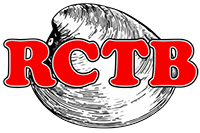Helping the Bay and Shorelines
RCTB members are dedicated to help environmentally sensitive creatures, shellfish, to become sustainable in the Barnegat Bay estuary. The greatest concern is the condition of the water in the bay, the bay floor, and the edges of the bay where the shellfish live. As part of its effort, RCTB wants to demonstrate and promote the service that the shellfish can to provide to the bay. They filter the water, provide habitat for other organisms and stabilize the bay floor and edges.
New Jersey Department of Environment Protection (NJDEP) Mordecai Island Grant
The purpose of this Grant Project was to expand the living shoreline by adding 4,000 shell bags to the living shoreline as well as deploying spat on shell bags to foster the growth of oyster colonies. More….. (Page 5 Annual Report)
COASTAL Project
RCTB has joined with the Ocean County Soil District (OCSD) and a diverse group of partners in the NJ COASTAL Aquaculture Project (Conservation Opportunities Advancing Sustainable Technologies for Aquaculture Leases). RCTB pledged a total amount of $118,500 in in-kind services over the five years of this project. More…… (Page 5 Annual Report)
Little Egg Harbor Spat on Shell Projects
In July 2023 RCTB was awarded two separate contracts by Little Egg Harbor Township to design and construct Spat-on-Shell projects as part of restoration activities at the Parkertown and Mystic Beaches. More…… (Page 6 Annual Report)
